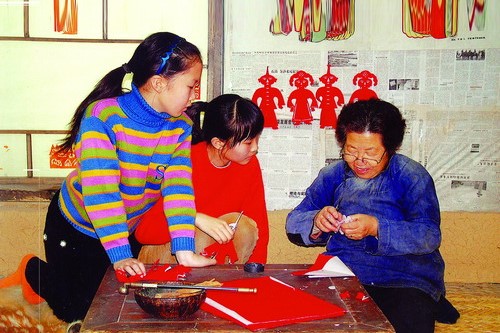Changbai Mountain Manchu paper-cutting

Changbai Mountain is the birth place of Manchu people and various Manchu customs have been inherited here even up to the present day; one of them, Manchu paper-cutting, is listed among the World Intangible Cultural Heritages.
Paper-cutting was first invented early in the Ming Dynasty (1368-1644). Later, from 1592 to 1643, Nvzhen, the predecessors of the Manchu people, started to use birches to make paper. They also carved patterns on leather, fish skins and linen cloth and then cut the patterns, which led to Manchu paper-cutting.
The patterns of such paper-cutting are about nature and people's worship of gods and goddesses, which came from Shamanism, the Manchu people's religion.
Characters of Manchu paper-cutting are mostly designed with a front-faced standing posture and bilateral symmetry.
An outstanding feature of the paper-cutting is that they are not cut by scissors but only by tearing. The torn edges make the final product more natural. Given in addition the special material of the "paper", which is actually made of leaves, leather and wood, the artwork is a vivid and natural national specialty of Manchu people.
Manchu paper-cutting, before it was chosen as a world intangible cultural heritage, was selected as one of China's in 2008.
